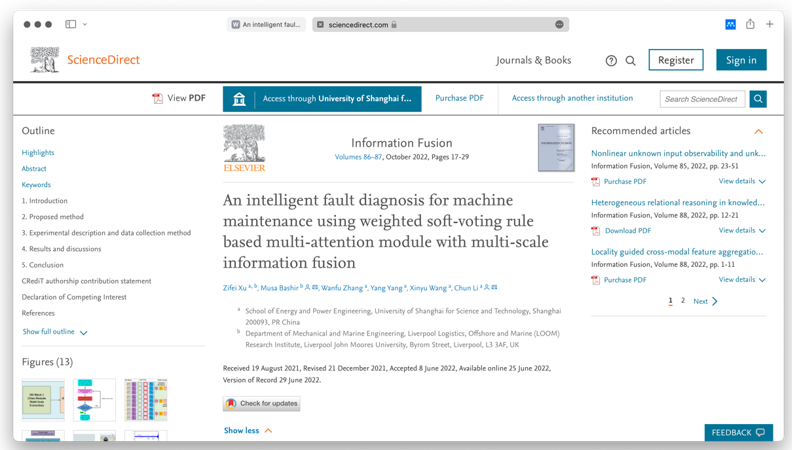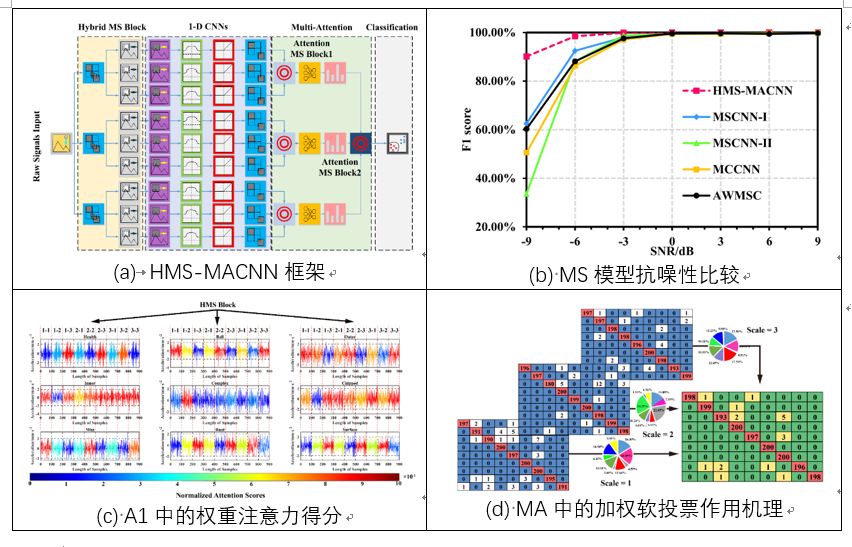Recently, the team led by Professor Li Chun from School of Energy and Power Engineering worked together with Liverpool John Moores University to publish a research paper titled “An Intelligent Fault diagnosis for machine maintenance using weighted soft-voting rule based multi-attention module with multi-scale information fusion”in Information Fusion (IF+17.564). Xu Zifei, a doctoral student from USST, is the first author; Li Chun is the corresponding author; USST is the first corresponding unit.

The ability of engineering systems to process multi-scale information is a crucial requirement in the development of an intelligent fault diagnosis model. This study develops a hybrid multi-scale convolutional neural network model coupled with multi-attention capability (HMS-MACNN) to solve both the inefficient and insufficient extrapolation problems of multi-scale models in fault diagnosis of a system operating in complex environments. The model's capabilities are demonstrated by its ability to capture the rich multi-scale characteristics of a gearbox including time and frequency multi-scale information. The capabilities of the Multi-Attention Module, which consists of an adaptive weighted rule and a novel weighted soft-voting rule, are respectively integrated to efficiently consider the contribution of each characteristic with different scales-to-faults at both feature- and decision-levels. The model is validated against experimental gearbox fault results and offers robustness and generalization capability with F1 value that is 27% higher than other existing multi-scale CNN-based models operating in a similar environment. Furthermore, the proposed model offers higher accuracy than other generic models and can accurately assign attention to features with different scales. This offers an excellent generalization performance due to its superior capability in capturing multi-scale information and in fusing advanced features following different fusion strategies by using Multi-Attention Module and the hybrid MS block compared to conventional CNN-based models.

The wind and electricity power has made it crucial to achieving the double-carbon goal and ensure energy security. Professor Li Chun and his team members carried out research in development and utilization of wind power, and first put forward the idea of the flow adaptive control method based on fractal and intelligent bionics and the new configuration design method of blade, floating platform, and tower structure, which greatly improves the wind turbines pneumatic and functional performance.
Link to the paper: https://doi.org/10.1016/j.inffus.2022.06.005


